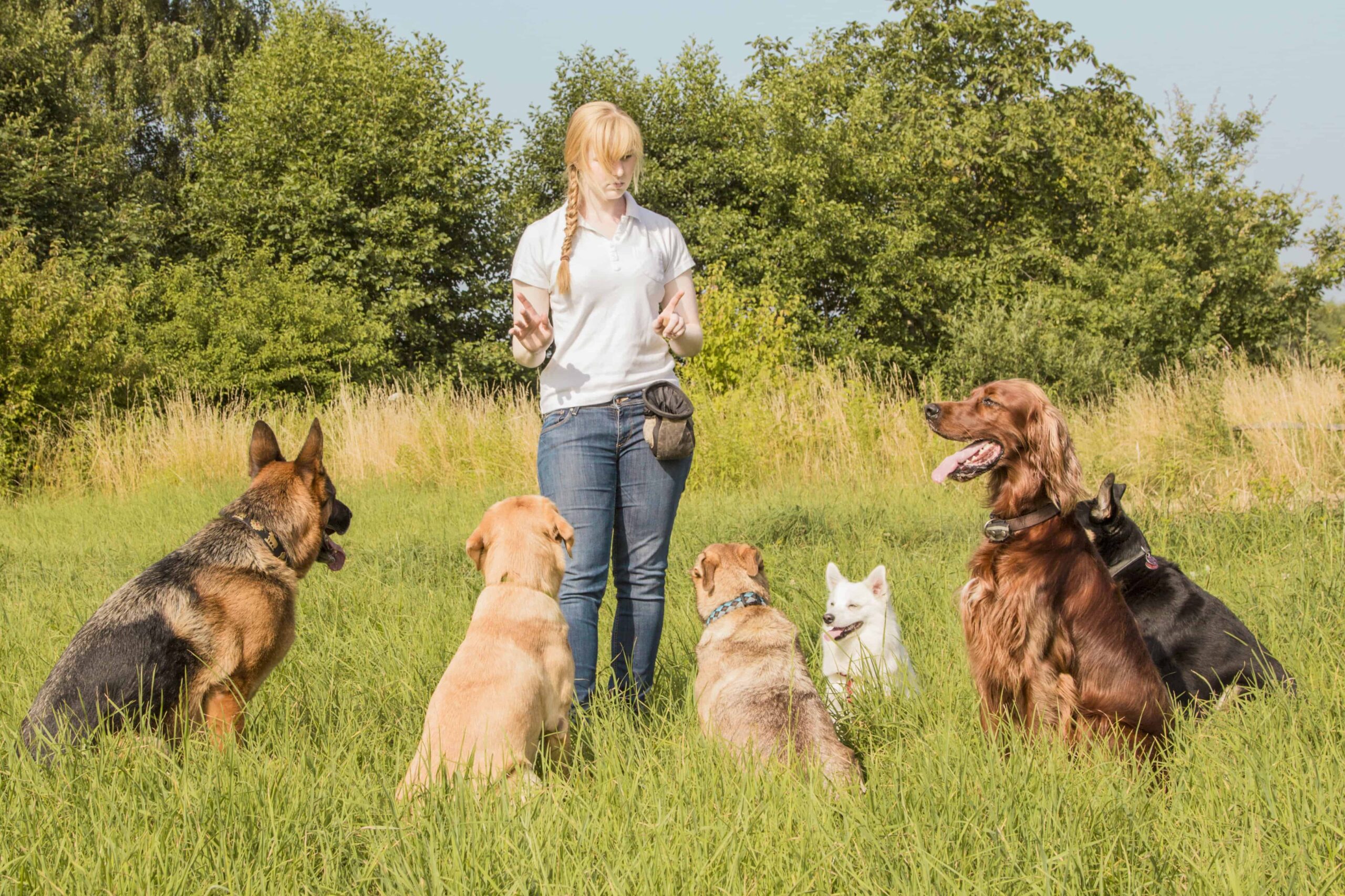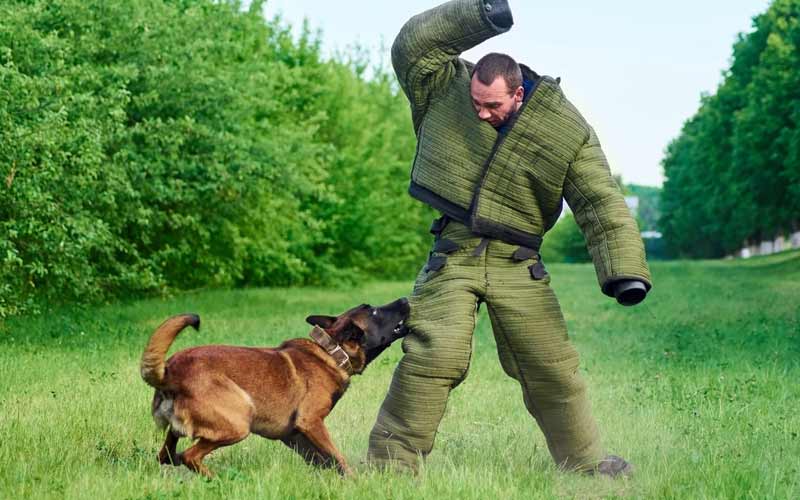Transform Your Canine's Habits With Proven Training Techniques
Changing your pet's habits needs a nuanced understanding of their private attributes and demands, along with the application of tried and tested training approaches. By using favorable support and acknowledging necessary add their body language, you can effectively address common behavior concerns such as too much barking or leaping. Uniformity in your training technique not only enhances obedience but additionally cultivates a much deeper bond of trust fund and regard between you and your animal. The course to successful transformation might provide unexpected challenges that warrant more expedition.
Comprehending Pet Actions
Comprehending dog habits is important for efficient training and communication in between people and their canine companions. Pet dogs, as social animals, exhibit a variety of behaviors influenced by genes, environment, and experiences - Dog training. Identifying these actions aids owners tailor their training approaches to fulfill the particular demands of their canines
Key facets of pet behavior include body language, articulations, and social communications. In addition, socialization plays a vital function in shaping actions; pets that communicate favorably with various individuals and various other animals are normally more versatile and well-adjusted.
Moreover, identifying tension signals-- such as pacing, evasion, or panting actions-- can prevent acceleration into more major issues. Proprietors who are in harmony with their pet's actions can create a secure and nurturing environment, promoting trust and improving the training procedure. Eventually, a deep understanding of canine habits lays the structure for a harmonious partnership and effective training end results, guaranteeing both canines and their proprietors flourish with each other.
Positive Reinforcement Methods
Favorable reinforcement techniques are widely recognized as one of the most reliable approaches for training canines, fostering a positive learning atmosphere. This approach involves satisfying wanted actions with deals with, praise, or play, thus motivating the pet dog to repeat those behaviors. Unlike corrective methods, favorable support constructs trust fund and reinforces the bond in between the instructor and the canine.
Incentives must be provided promptly following the wanted actions to assist the pet dog make the connection. Consistency is additionally important; using the exact same commands and benefits assists the pet dog comprehend what is expected.
It is essential to keep in mind that positive support is not regarding bribery; instead, it has to do with reinforcing etiquette. With time, as the dog finds out to link specific activities with positive outcomes, the regularity of rewards can be progressively lowered, transitioning to spoken appreciation or recurring benefits. This approach not just motivates obedience however also advertises a pleased and confident dog, making training an extra satisfying experience for both celebrations involved.
Addressing Usual Concerns
Resolving usual problems throughout dog training is crucial for guaranteeing a harmonious and successful partnership between the dog and its proprietor. Numerous pet owners encounter behavioral difficulties, such as too much barking, leaping, and leash drawing. Understanding the origin of these behaviors is vital for effective training.
To mitigate this, supply ample physical exercise, mental stimulation, and opportunities for social communication with both humans and various other pet dogs. Training the canine to sit upon greeting can redirect this actions positively.
Leash pulling is another common issue, often resulting from a canine's eagerness to discover. Utilizing proper leash managing strategies, combined with training procedures that encourage loose-leash walking, can considerably enhance this actions.
Additionally, concerns like source guarding or separation anxiousness call for tailored approaches. Progressive desensitization and Web Site counter-conditioning can be effective in attending to these obstacles. By acknowledging and proactively taking care of these common concerns, canine proprietors can foster a much more enjoyable training experience and reinforce the bond with their canine companions.
Uniformity in Training

To accomplish uniformity, it is vital that all members of the home follow the same training methods. For example, making use of the same verbal cues and hand signals makes sure that the dog receives uniform messages. Furthermore, the timing of adjustments and benefits should be consistent; prompt support increases the probability that the pet dog will connect the behavior with the outcome.
Normal technique sessions, coupled with structured schedules for feeding, strolling, and playtime, aid pets prepare for and comprehend their setting, making them more responsive to training. Eventually, consistency fosters a feeling of security and trust fund, empowering dogs to discover more efficiently.
Structure a Solid Bond
Just how can fostering a strong bond in between a pet and its proprietor improve the training experience? A strong partnership improved trust fund and respect works as the structure for reliable training. click here to find out more When a canine really feels secure in its link with its proprietor, it is a lot more most likely to exhibit positive habits and be receptive to finding out. This bond urges the pet to engage completely in training sessions, as it checks out the owner as a source of advice and assistance.
In addition, a solid bond assists in much better interaction. Canines are experienced at checking out human Dog training hints, and a relying on connection enables for clearer signals throughout training. Owners that invest time in building this bond with play, socializing, and positive reinforcement develop an environment where dogs feel eager and inspired to learn.
In addition, a well-established connection can lower stress and anxiety and behavior issues, as dogs are less likely to act out when they really feel comprehended and looked after. For that reason, focusing on the development of a solid bond not just improves the training experience but additionally contributes to a happier and much more well-adjusted canine. Eventually, the journey of training transforms into a collective partnership, bring about lasting behavior renovations.
Conclusion

Owners who are attuned to their pet's actions can produce a caring and risk-free atmosphere, promoting trust and enhancing the training process. Inevitably, a deep understanding of canine habits lays the foundation for a harmonious partnership and efficient training results, guaranteeing both dogs and their proprietors prosper together.
Addressing typical issues throughout pet dog training is essential for making certain a unified and successful partnership between the pet and its owner.Uniformity is a cornerstone of reliable canine training, as it develops a clear framework for the pet to comprehend expectations and habits.In conclusion, changing a dog's actions through confirmed training methods calls for an understanding of canine behavior, the application of favorable reinforcement strategies, and a focus on uniformity.